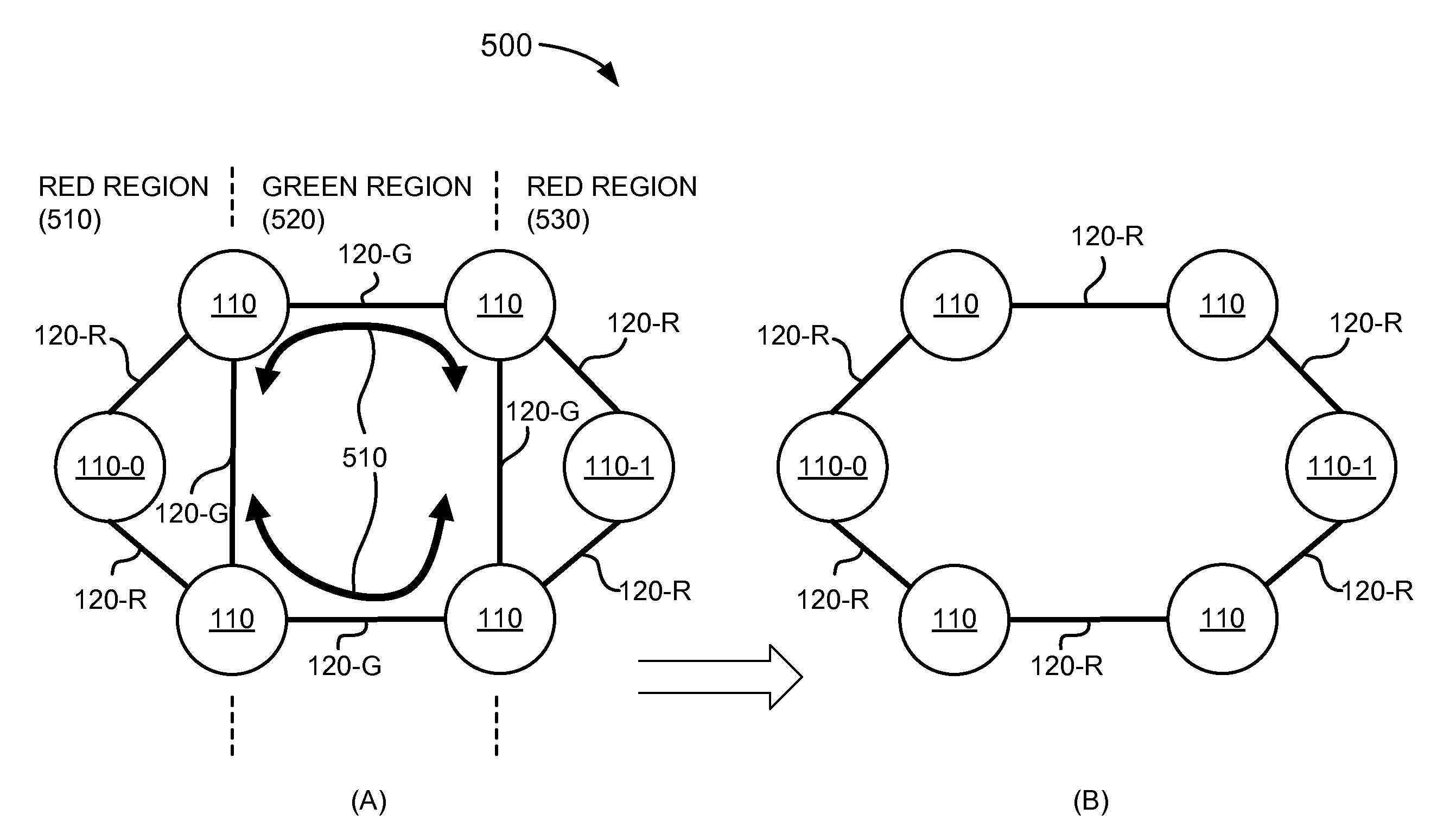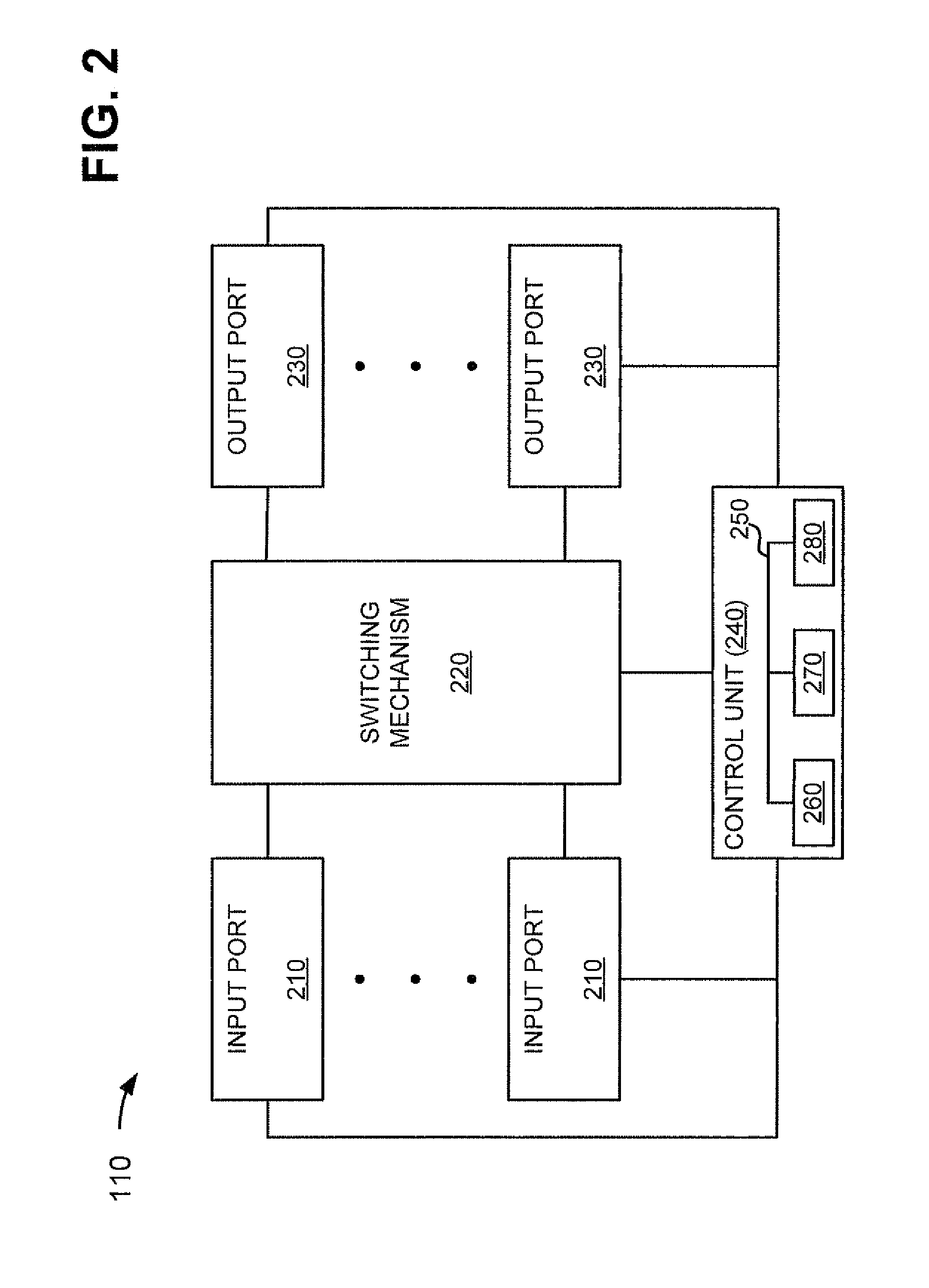LSP hierarchy for MPLS networks
a multi-protocol label switching and label switching technology, applied in the field of data processing, can solve the problems of expensive and time-consuming network upgrade, many networks do not support gmpls,
- Summary
- Abstract
- Description
- Claims
- Application Information
AI Technical Summary
Benefits of technology
Problems solved by technology
Method used
Image
Examples
example 1
Diverse Path Calculation Example 1
[0067]As shown in FIG. 8, a MPLS network 800 may include network devices 110-1, . . . , 110-8 interconnected by links L1, L3, . . . , L11. Network 800 may include a primary LSP 810, and two FA-LSPs 820 and 830. Primary LSP 810 may, for example, traverse links L3, L4, L8, and L10. FA-LSPs 820 and 830 may advertise links L4-L8 as one TE link, and a LSP may only see FA-LSPs 820 and 830 as a TE link between network devices 110-3 and 110-6.
[0068]In this arrangement, it may be desired that a secondary LSP be created that may travel a path diverse from the path taken by primary LSP 810. However, due to FA-LSP 820, a secondary LSP 840 may traverse a path that may have links (e.g., links L4 and L8) that may be common to links traversed by primary LSP 810. In order to create a secondary LSP diverse from primary LSP 810, an administrative group policy may be implemented that may exclude links L4 and L6 from the calculation of the path for the secondary LSP. Fo...
example 2
Diverse Path Calculation Example 2
[0069]As shown in FIG. 9, a MPLS network 900 may include network devices 110-1, . . . , 110-8 interconnected by links L1, L3, . . . , L11. Network 900 may include a primary LSP 910, and two FA-LSPs 920 and 930. Primary LSP 910 may, for example, traverse links L3, L4, L8, and L10. FA-LSPs 920 and 930 may advertise links L4-L8 as one TE link, and a LSP may only see FA-LSPs 920 and 930 as a TE link between network devices 110-3 and 110-6.
[0070]In this arrangement, it may be desired that a secondary LSP be created that may travel a path diverse from the path taken by primary LSP 910. However, due to FA-LSP 930, a secondary LSP 940 may traverse a path that may have a common link (e.g., link L8) with primary LSP 910. In order to create a secondary LSP diverse from primary LSP 910, the concepts of fate sharing and Shared Risk Link Groups (SRLGs) may be implemented to exclude links L4 and L6 from the calculation of the path for a secondary LSP 950. The MPLS...
PUM
 Login to View More
Login to View More Abstract
Description
Claims
Application Information
 Login to View More
Login to View More - R&D
- Intellectual Property
- Life Sciences
- Materials
- Tech Scout
- Unparalleled Data Quality
- Higher Quality Content
- 60% Fewer Hallucinations
Browse by: Latest US Patents, China's latest patents, Technical Efficacy Thesaurus, Application Domain, Technology Topic, Popular Technical Reports.
© 2025 PatSnap. All rights reserved.Legal|Privacy policy|Modern Slavery Act Transparency Statement|Sitemap|About US| Contact US: help@patsnap.com



